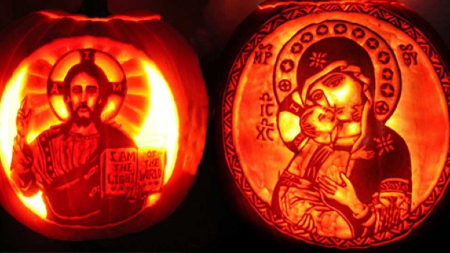 Hi readers, it seems you use Catholic Online a lot; that's great! It's a little awkward to ask, but we need your help. If you have already donated, we sincerely thank you. We're not salespeople, but we depend on donations averaging $14.76 and fewer than 1% of readers give. If you donate just $5.00, the price of your coffee, Catholic Online School could keep thriving. Thank you. Help Now >
Hi readers, it seems you use Catholic Online a lot; that's great! It's a little awkward to ask, but we need your help. If you have already donated, we sincerely thank you. We're not salespeople, but we depend on donations averaging $14.76 and fewer than 1% of readers give. If you donate just $5.00, the price of your coffee, Catholic Online School could keep thriving. Thank you. Help Now >
Hieronymus Fabricius
FREE Catholic Classes
(Surnamed ab Aquapendente ).
Distinguished Italian anatomist and surgeon, b. in the little town of Acquapendente (Aquæ-Taurinæ), twelve miles from Orvieto, in 1537; d. at Padua, 21 May, 1619. He is known by the name of his birthplace to distinguish him from his contemporary, the great German surgeon Fabricius Hildanus. In English medical literature Fabricius is best known as the teacher of Harvey, who gives him the entire credit for the discovery of the valves in the veins which meant so much for Harvey's own discovery of the circulation of the blood. Some valves in the veins, however, had been seen and described by investigators before this, probably even by Erasistratus in ancient times. It was Fabricius' merit that he recognized the existence of a system of valves.
Sent by his parents to the University of Padua, Fabricius succeeded admirably in Greek, Latin, and philosophy. When he took up medicine he became the favourite pupil of Fallopius, being his demonstrator in anatomy at Padua when scarcely twenty. Though he was only twenty-five when Fallopius died, Fabricius was chosen his successor and a little later became professor of surgery, occupying both chairs for nearly half a century (1562-1609). His abilities were properly appreciated by the Senate of Venice, which built for him at Padua a spacious anatomical theatre bearing his name. He was created a Knight of St. Mark, and his annual salary was a thousand crowns, which was continued for ten years after his resignation. A statue was erected to his memory in Padua after his death. Fabricius was indifferent to money, refused regular fees, and accepted only such presents as wealthy patients forced on him. His work on anatomy (500 fol. pp.) is illustrated by hundreds of figures on sixty-one full-page plates, some of the best ever made. A monograph on the speech of brutes and a study of the comparative anatomy of the appendix are suggestive even for modern readers. His work on surgery is scarcely less valuable than that on anatomy and has gone through twenty editions in many languages. His principal works are: "De visione, voce, auditu" (Venice, 1600); "De brutorum loquelâ" (Padua, 1603); "De formato foetu" (Venice, 1600); "De locutione" (Venice, 1627); "Tractatus anatomicus triplex" (Frankfort, 1614). All his other works were reprinted at Frankfort shortly after this time, and all his works at Leipzig in 1687.
Join the Movement
When you sign up below, you don't just join an email list - you're joining an entire movement for Free world class Catholic education.
-

-
Mysteries of the Rosary
-
St. Faustina Kowalska
-
Litany of the Blessed Virgin Mary
-
Saint of the Day for Wednesday, Oct 4th, 2023
-
Popular Saints
-
St. Francis of Assisi
-
Bible
-
Female / Women Saints
-
7 Morning Prayers you need to get your day started with God
-
Litany of the Blessed Virgin Mary
All Saints' Day, Halloween and All Souls' Day: What's the difference?
-

Should Christians Celebrate Halloween?
-

Since when did Halloween become a Christian holiday?
-
ADORABLE: A Little Boy's Heartfelt Lunchtime Prayer
-
Scientists Decode 3,000-Year-Old Babylonian Tablet, Revealing Potential Location of Noah's Ark
Daily Catholic
 Daily Readings for Friday, November 01, 2024
Daily Readings for Friday, November 01, 2024 St. Valentine Berrio-Ochoa: Saint of the Day for Friday, November 01, 2024
St. Valentine Berrio-Ochoa: Saint of the Day for Friday, November 01, 2024 Litany of the Saints: Prayer of the Day for Friday, November 01, 2024
Litany of the Saints: Prayer of the Day for Friday, November 01, 2024- Daily Readings for Thursday, October 31, 2024
- St. Wolfgang: Saint of the Day for Thursday, October 31, 2024
- Memorare: Prayer of the Day for Thursday, October 31, 2024
![]()
Copyright 2024 Catholic Online. All materials contained on this site, whether written, audible or visual are the exclusive property of Catholic Online and are protected under U.S. and International copyright laws, © Copyright 2024 Catholic Online. Any unauthorized use, without prior written consent of Catholic Online is strictly forbidden and prohibited.
Catholic Online is a Project of Your Catholic Voice Foundation, a Not-for-Profit Corporation. Your Catholic Voice Foundation has been granted a recognition of tax exemption under Section 501(c)(3) of the Internal Revenue Code. Federal Tax Identification Number: 81-0596847. Your gift is tax-deductible as allowed by law.






 Daily Readings for Friday, November 01, 2024
Daily Readings for Friday, November 01, 2024 St. Valentine Berrio-Ochoa: Saint of the Day for Friday, November 01, 2024
St. Valentine Berrio-Ochoa: Saint of the Day for Friday, November 01, 2024 Litany of the Saints: Prayer of the Day for Friday, November 01, 2024
Litany of the Saints: Prayer of the Day for Friday, November 01, 2024

